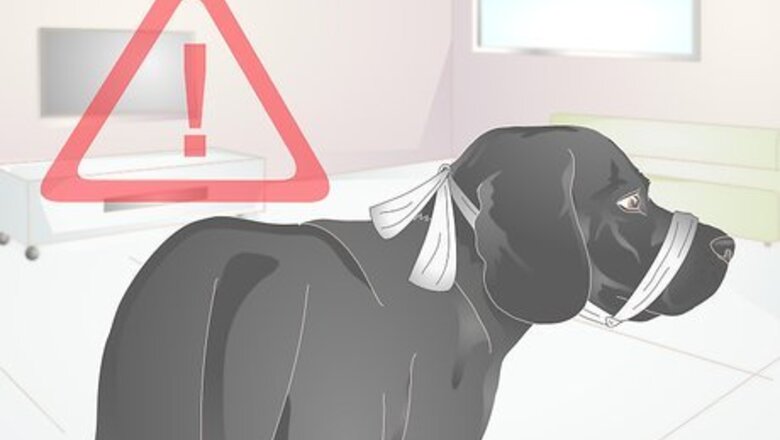
views
X
Trustworthy Source
American Kennel Club
The American Kennel Club (AKC) is a purebred dog pedigree registry in the United States. The AKC advocates for the responsible ownership of dogs and promotes purebred dog events, such as the Westminster Dog Show.
Go to source
However, proper technique when tying a gauze muzzle can provide a secure temporary solution so that you can assist an injured or frightened animal. Gauze muzzles are also useful if you don’t have a muzzle handy and need one immediately. Keep in mind that it is always better to have a sturdy purchased muzzle on hand.
Muzzling a Dog
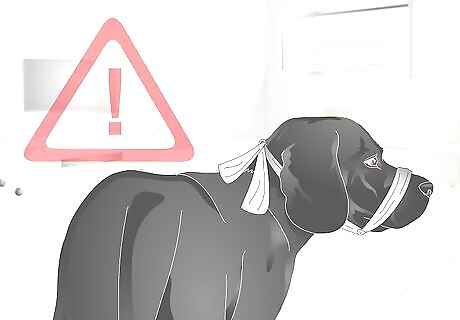
Use a gauze muzzle for emergencies. Gauze muzzles are not optimum for dogs. They are best reserved for emergencies, when there is absolutely no other option. You should also only use a homemade muzzle like a gauze muzzle temporarily. Other materials that can become emergency muzzles include leashes, ropes, pantyhose, and so on. Avoid having to use a homemade muzzle by keeping a real muzzle in your dog’s fist aid kit. You can purchase a gauze roll bandage at any pharmacy (like Walgreens), drugstore, big box store (like Walmart), or most grocery stores. Check your first aid kit. Many come with a roll of gauze.
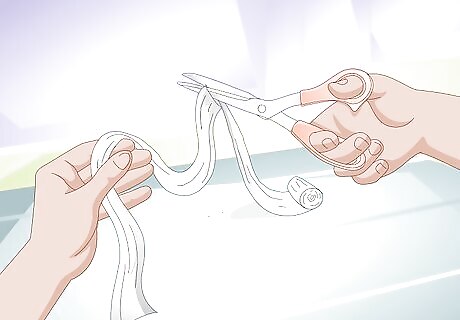
Cut off a long strip of gauze bandage. In an emergency, you want to create a gauze muzzle quickly. Get an idea for how much gauze you'll need by pulling out and cutting off a strip long enough to wind several times around your dog’s head. Before cutting the gauze, wrap it around your dog's head from under their chin to behind their ears. Then triple this length before cutting. The length that you cut depends on the size of your dog’s head. You will obviously need a longer strip for a bigger dog. Cutting off such a long length allows you extra in case you estimated the size of your dog’s head wrong.
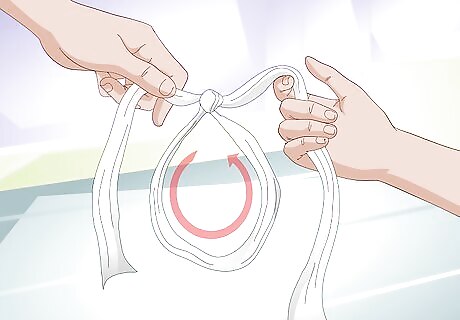
Tie off a big loop in the middle. Pull the strip of gauze out to its full length. Form a loop in the middle of the gauze strip. Tie a knot where this loop closes. You should now have a loop of gauze with long, loose ends on either side of the knot. Make sure the knot is a slipknot so that you can tighten the loop once it is around the dog’s nose. Tie a slipknot by creating a loop and pushing a second loop through it.
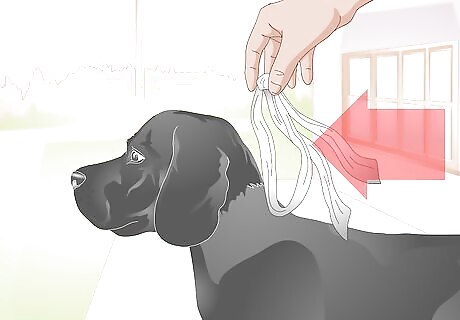
Advance toward the dog so they can’t see you. You want to approach the dog with the loop open in your hands. In order to place the loop securely over your dog’s snout, make sure you approach from the back or the side. This way they can’t see you coming and will be less startled.
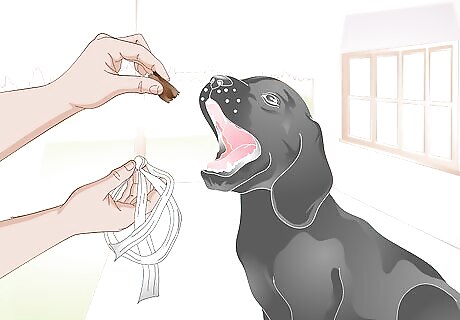
Consider training your dog to wear a muzzle. Although you should restrict use of a gauze muzzle to emergencies, you might want to train your dog to use a muzzle. If a dog is trained, they will be less likely to become aggressive when you apply a gauze muzzle. Use treats and gradual exposure techniques to train a dog to take a muzzle. For example, you could smear the interior of a muzzle with a treat like peanut butter or wet dog food. Play with the dog while they wear the muzzle so that they associate the muzzle with positive things. Take short walks with the muzzle. Do this muzzle training whenever you would normally walk your dog, such as every afternoon.
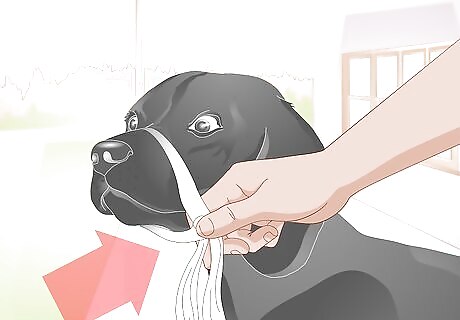
Slide the loop over the nose. Before your dog has a chance to see what you are holding, slide the loop over their nose. Keep the center of the loop over the end of the dog’s nose for the best fit. Slid the loop all the way back to the jaw line, where the snout meets the face.
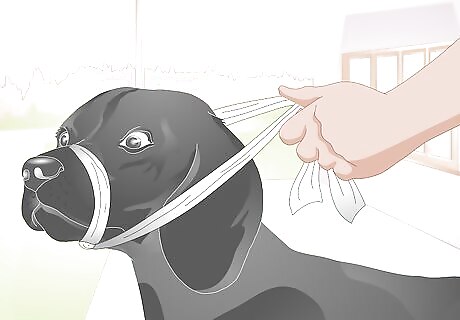
Tighten the loop. As soon as the loop is around the dog’s nose, tighten the loop firmly so that your dog cannot open his mouth. Bring the loose pieces of fabric around the snout and tie another loose knot on the bottom of the snout.
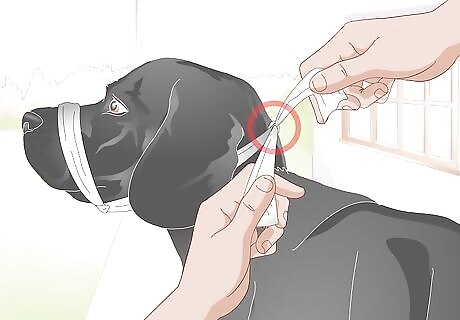
Tie the bandage behind the neck. Once the loop is in place, pull the loose ends of the gauze behind the dog’s head. Cross one end over the other. Then tie the two ends in a bow that is easy to undo. Since gauze muzzles are used only in emergencies, being able to remove them quickly is important.
Muzzling a Pug-Nosed Dog

Tie a loop in a long piece of gauze. Just as you would for a dog with a long snout, cut off a long strip of gauze bandage. Make sure it is long enough to wind several times around your dog’s head. Then form a loop in the middle and tie a slipknot for it.
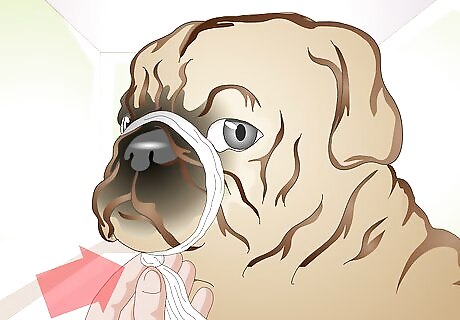
Place the knot under the chin. For pug-nosed dogs, you must be sure to place the loop’s slipknot under their chin. Come up on the dog from behind or the side, then slip it under their nose. Keep the knot turned toward the floor so that it easily slides under the dog’s chin. For longer snouts, the knot goes behind the ears.

Tie loose ends behind the ears. Once the loop is on the dog’s nose, slide it back toward the jawline. Then pull the slipknot tight enough to keep the dog’s mouth shut. Quickly pull the loose ends back and tie them behind the ears. Use a slipknot or bow so that the muzzle can be removed quickly.
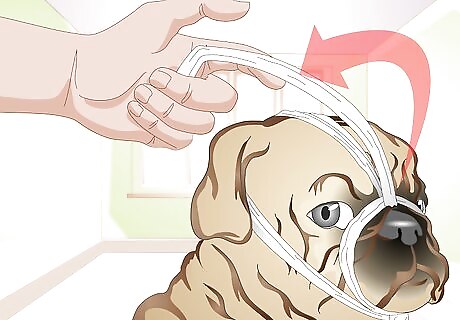
Pull a loose end back through the nose loop. For pug-nosed dogs, it is important to take one loose end and feed it back through the gauze tied around the dog’s snout. Pull this loose end across your dog’s forehead. Then slide it under the tightened loop at the top, right by the nose. Feeding an end back through the loop keeps the muzzle from slipping off. Keeping the muzzle on can be challenging on dogs with pug noses, and keeping it on is important.
Dealing with a Resistant Dog
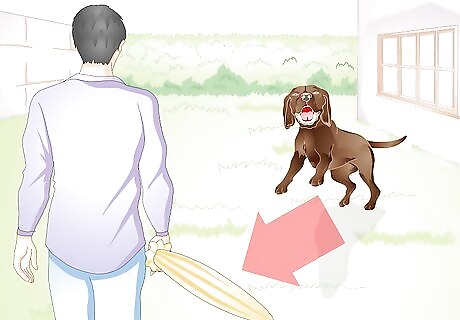
Protect yourself from a violent dog. If you need a muzzle a dog who is being violent, such as because they are afraid or in pain, approach with a very calm demeanor. Avoid making eye contact with the dog. Also make yourself appear bigger, such as holding an umbrella or sweater out in front of your body. Once the dog senses that you are not afraid and are not a threat, he may back down. As soon as the dog backs down from its aggressive stance, slip on the muzzle and make it tight.

Be strong if a dog resists. Your dog may resist or lunge while you put the muzzle on, which is likely if the dog is hurt or afraid. Bring someone along to help you keep the dog still while putting on the muzzle. Also consider wearing thick gloves and clothing to prevent the dog being able to bite you. Although you can restrain the dog physically, try instead to calm it down so that you can put the muzzle on without issue.

Tie on a muzzle when a dog is likely to bite. A gauze muzzle is useful when your dog becomes unexpectedly aggressive. If you see evidence that your dog wants to bite another animal, quickly restrain them by tying on a gauze muzzle. Signs that your dog is about to bite include tense posture, a flicking tongue, visible whites in the eyes, and so on.
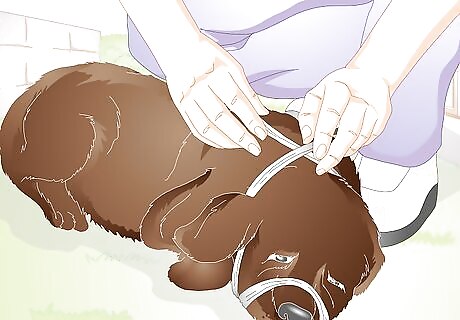
Muzzle a frightened or injured dog. When a dog becomes frightened or injured, getting them muzzled quickly is a priority. Dogs tend to bite when they are in extreme fear or pain. A quickly tied gauze muzzle will prevent injury while you try to help the dog. A gauze muzzle can be especially helpful in a rescue situation.
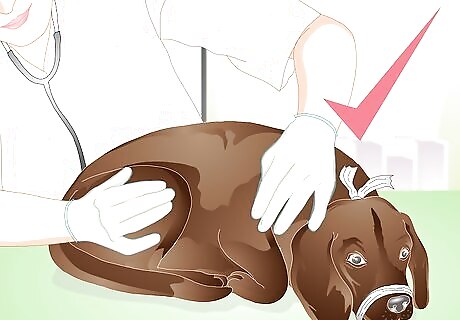
Contain a dog for an exam. If your dog needs to be quickly examined, such as after a rescue, a gauze muzzle provides a fast way to protect yourself from getting bitten. You can also use a gauze muzzle to quickly groom a dog. You might want to groom a dog right after it has been rescued. A dog might be covered in mud, brambles, or other debris from traveling.




















Comments
0 comment